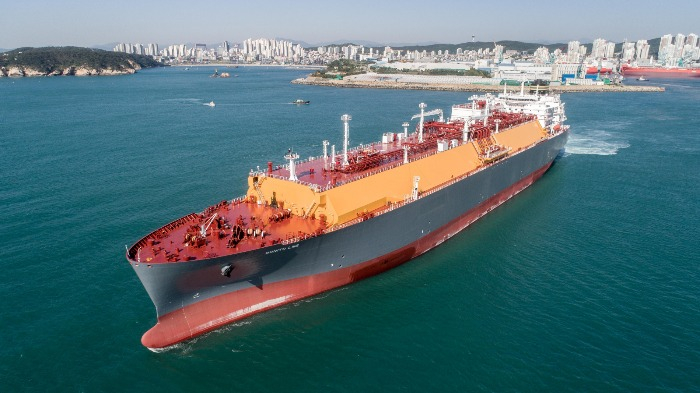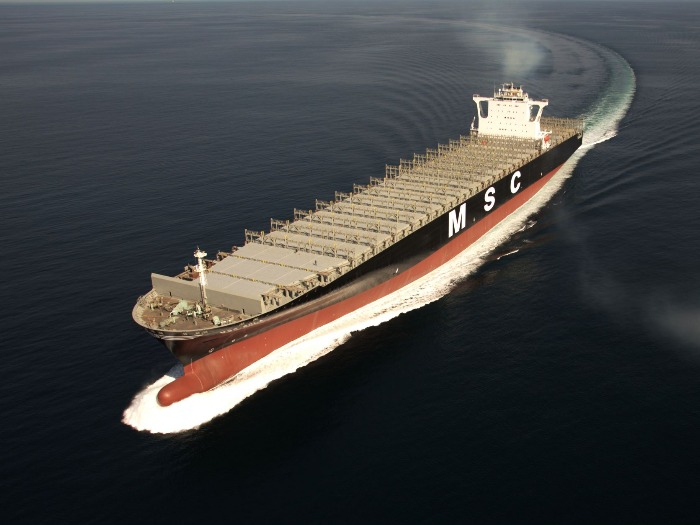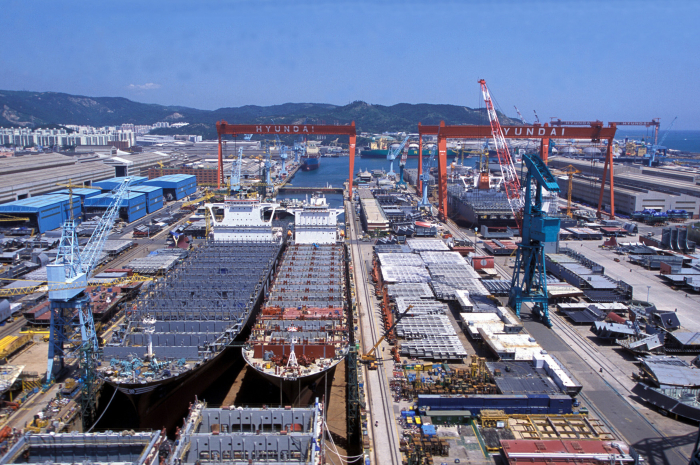HD KSOE to build world's largest ammonia carriers
The shipbuilder's cumulative orders topped its full-year target, with eco-friendly ships accounting for almost 70%
By Sep 07, 2023 (Gmt+09:00)
LG Chem to sell water filter business to Glenwood PE for $692 million


KT&G eyes overseas M&A after rejecting activist fund's offer


Mirae Asset to be named Korea Post’s core real estate fund operator


StockX in merger talks with Naver’s online reseller Kream


Meritz backs half of ex-manager’s $210 mn hedge fund



HD Korea Shipbuilding & Offshore Engineering Co. (KSOE), the intermediate holding company of HD Hyundai Heavy Industries, is set to become the first shipbuilder in the world to build the industry’s largest ammonia carriers, lifting its orders received so far this year above its full-year target.
The world’s No. 1 shipbuilder recently bagged a combined $466 million in orders from Singapore’s Eastern Pacific Shipping and Greece-based Capital Ship Management to build a total of four very large gas carriers (VLGCs), KSOE said during the Gastech Conference 2023 in Singapore this week.
The conference is an annual event held primarily for energy companies.
The vessel measures 88,000 cubic meters, the world’s largest VLGC, with a cargo capacity of 98%, bigger than the maximum capacity of 86% for the existing gas carriers.
KSOE will first build two of them in its Ulsan dockyard and deliver them in the second half of 2027, one each for the two shipping companies.

The 88,000-cubic-meter ammonia carriers are liquefied petroleum gas (LPG) dual-fuel propulsion ships. If ammonia propulsion engines are developed later on, the vessels can be converted into ammonia-fueled ships.
If so, they will become the world’s first ammonia carriers with ammonia-fueled propulsion.
Including the new-build orders, KSOE has secured a combined $15.9 billion in orders for 122 vessels, above its entire 2023 target of $15.7 billion, thanks to the rapid rise in gas carrier prices.

The total 122 vessels it has won orders for this year break down to: 35 petrochemical carriers; 29 container ships; 26 ammonia carriers; 20 liquefied natural gas carriers; three oil tankers; two medium-sized gas carriers; two liquefied CO2 carriers; one floating offshore production unit; and seven other types of ships.
Eco-friendly vessels, including dual-fuel ships, account for 69.4% of the total.
Meanwhile, HD Hyundai Heavy Industries on Thursday reached a tentative agreement with its unionized workers on annual pay rises, suggesting little chance of any union action in the near term.
Write to Hyung-Kyu Kim at khk@hankyung.com
Yeonhee Kim edited this article.
-
 Shipping & ShipbuildingHyundai Samho sees bumper 2023 as ship orders pile up
Shipping & ShipbuildingHyundai Samho sees bumper 2023 as ship orders pile upAug 17, 2023 (Gmt+09:00)
3 Min read -

-
 Shipping & ShipbuildingKorea's HD KSOE to buy 35% stake in marine engine maker STX
Shipping & ShipbuildingKorea's HD KSOE to buy 35% stake in marine engine maker STXJul 31, 2023 (Gmt+09:00)
1 Min read -
 Shipping & ShipbuildingHD KSOE secures order for world's largest liquefied CO2 carrier
Shipping & ShipbuildingHD KSOE secures order for world's largest liquefied CO2 carrierJul 19, 2023 (Gmt+09:00)
1 Min read -
 Shipping & ShipbuildingHD KSOE secures $319 mn contract for three VLGC
Shipping & ShipbuildingHD KSOE secures $319 mn contract for three VLGCJul 07, 2023 (Gmt+09:00)
1 Min read -
 Shipping & ShipbuildingHD KSOE bags $2.3 bn in vessel orders, achieves 90% of 2023 target
Shipping & ShipbuildingHD KSOE bags $2.3 bn in vessel orders, achieves 90% of 2023 targetJul 03, 2023 (Gmt+09:00)
2 Min read


